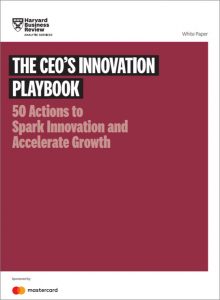According to Harvard Business Review

GUEST POST from Robyn Bolton
You are a savvy manager, so you know that you need an innovation portfolio because (1) a single innovation isn’t enough to generate the magnitude of growth your company needs, and (2) it is the best way to manage inherently risky endeavors and achieve desired returns.
Too bad you’re wrong.
According to an article in the latest issue of HBR, you shouldn’t have an innovation portfolio. You should have an innovation basket.
Once you finish rolling your eyes (goodness knows I did), hear me (and the article’s authors) out because there is a nuanced but important distinction.
Our journey begins with the obvious.
In their article “A New Approach to Strategic Innovation,” authors Haijian Si, Christoph Loch, and Stelios Kavadias argue that portfolio management approaches have become so standardized as to be practically useless, and they propose a new framework for ensuring your innovation activities achieve your strategic goals.
“Companies typically treat their innovation projects as a portfolio: a mix of projects that, collectively, aim to meet their various strategic objectives,” the article begins. “MOO,” I think (household shorthand for Master Of the Obvious).
“When we surveyed 75 companies in China, we discovered that when executives took the trouble to link their project selection to their business’s competitive goals, the contribution of their innovation activities performance increased dramatically,” the authors continue. “Wow, fill this under N for No Sh*t, Sherlock,” responded my internal monologue.
The authors go on to present and explain their new framework, which is interesting in its focus on asking and answering seemingly simple questions (what, who, why, and how) and identifying internal weaknesses and vulnerabilities through a series of iterative and inclusion conversations. The process is a good one but feels more like an augmentation of an existing approach rather than a radically new one.
Then we hit the “portfolio” vs. “basket” moment.
According to the authors, once the management team completes the first step by reaching a consensus on the changes needed to their strategy, they move on to the second step – creating the innovation basket.
The process of categorizing innovation projects is the next step, and it is where our process deviates from established frameworks. We use the word “basket” rather than “portfolio” to denote a company’s collection of innovation projects. In this way, we differentiate the concept from finance and avoid the mistake of treating projects like financial securities, where the goal is usually to maximize returns through diversification. It’s important to remember that innovation projects are creative acts, whereas investment in financial securities is simply the purchase of assets that have already been created.
“Avoid the mistake of treating projects like financial securities” and “remember that innovation projects are creative acts.” Whoa.
Why this is important in a practical sense (and isn’t just academic fun-with-words)
Think about all the advice you’ve read and heard (and that I’ve probably given you) about innovation portfolios – you need a mix of incremental, adjacent, and radical innovations, and, if you’re creating a portfolio from scratch, use the Golden Ratio.
Yes, and this assumes that everything in your innovation portfolio supports your overall strategy, and that the portfolio is reviewed regularly to ensure that the right projects receive the right investments at the right times.
These assumptions are rarely true.
Projects tend to enter the portfolio because a senior executive suggested them or emerged from an innovation event or customer research and feedback. Once in the portfolio, they progress through the funnel until they either launch or are killed because of poor test results or a slashed innovation budget.
They rarely enter the portfolio because they are required to deliver a higher-level strategy, and they rarely exit because they are no longer strategically relevant. Why? Because the innovation projects in your portfolio are “assets that have already been created.”
What this means for you (and why it’s scary)
Swapping “basket” in for “portfolio” isn’t just the choice of a new word to bolster the claim of creating a new approach. It’s a complete reframing of your role as an innovation executive.
You no longer monitor assets that reflect purchases or investments promising yet-to-be-determined payouts. You are actively starting, shifting, and shutting down opportunities based on business strategy and needs. Shifting from a “portfolio” to a basket” turns your role as an executive from someone who monitors performance to someone who actively manages opportunities.
And this should scare you.
Because this makes the challenge of balancing operations and innovation an unavoidable and regular endeavor. Gone are the days of “set it and forget it” innovation management, which often buys innovation teams time to produce results before their resources are noticed and reallocated to core operations.
If you aren’t careful about building and vigorously defending your innovation basket, it will be easy to pluck resources from it and allocate them to the more urgent and “safer” current business needs that also contribute to the strategic changes identified.
Leaving you with an innovation portfolio.
Image Credit: Pixabay
![]() Sign up here to get Human-Centered Change & Innovation Weekly delivered to your inbox every week.
Sign up here to get Human-Centered Change & Innovation Weekly delivered to your inbox every week.
 Interview with Stefan H. Thomke
Interview with Stefan H. Thomke 3. Is there anything special about running online experiments?
3. Is there anything special about running online experiments?
